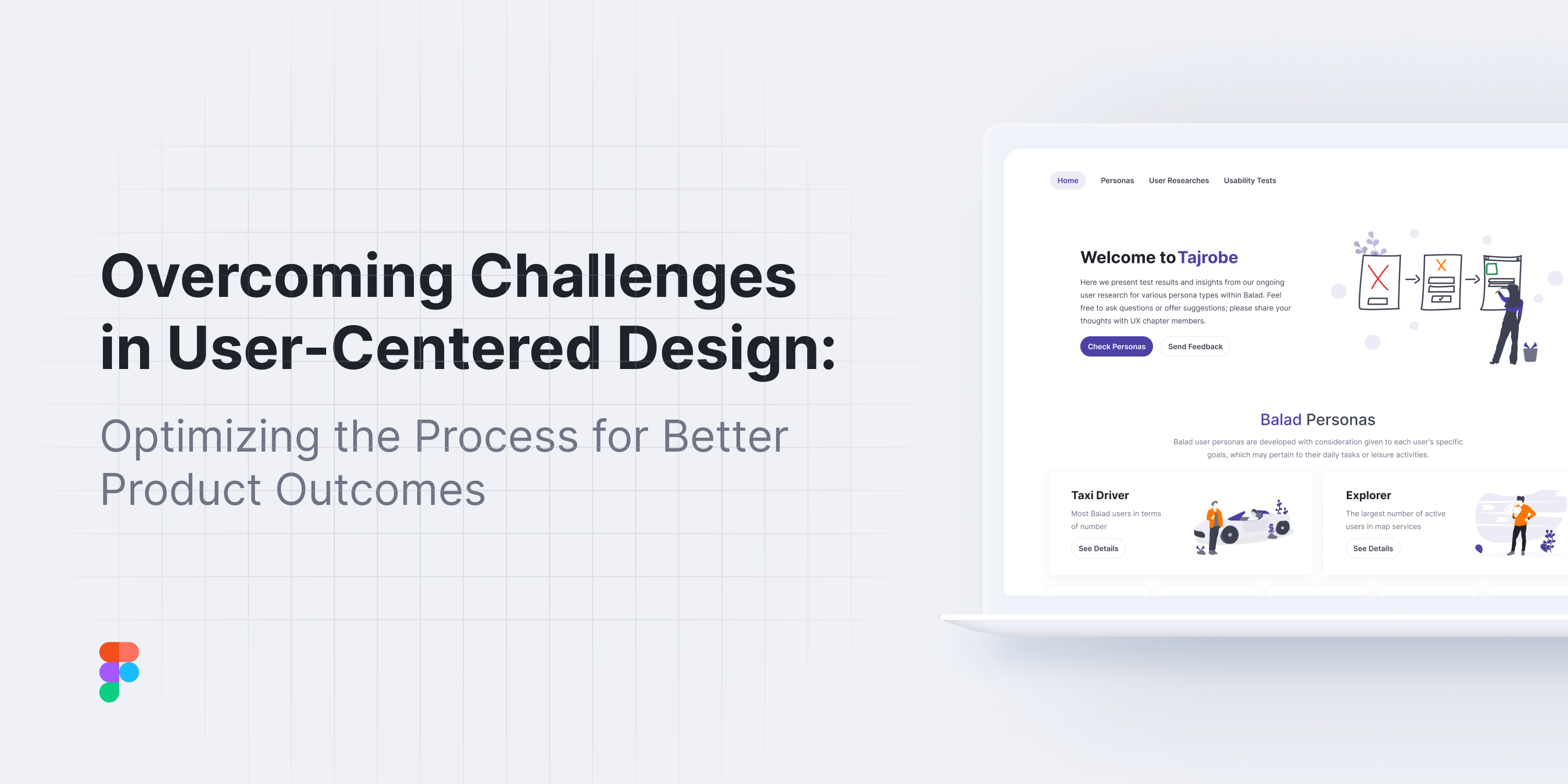
Introduction
User-centered design (UCD) is a design philosophy that focuses on the needs and preferences of the users. It is an iterative process that involves understanding the users’ needs, designing solutions to meet those needs, and testing the solutions with users to ensure that they are effective and efficient.
Problem Statement
Balad is a maps & navigation app designed to provide services for a diverse user base with varying personas. With over 12 million active users, including internet taxi drivers, public transport passengers, and tourists, Balad has become an indispensable part of people’s daily lives in Iran. To ensure the usability and functionality of new features, our product design team needs close communication with these users to gather valuable insights and feedback.
However, testing products like Balad in controlled laboratory conditions often yield inconclusive results due to its real-world nature. For instance, if we want to test a specific aspect of voice routing while a driver navigates a busy highway, the researcher must be inside the user’s car to observe and analyze the interaction firsthand.
These unique challenges come with a cost: users and researchers face increased time commitments and costs during testing. In light of these factors, our team has focused on optimizing the user recruitment process while leveraging hard-to-obtain reports to impact the entire product development spectrum significantly.
Solution
Recognizing that the entire product team should embrace user-centered design, we strive to develop Balad with a deep understanding of users’ needs and comprehensive knowledge about the platform. Following a productive discussion within the design team, which also included our head of support services, we acknowledged that we possess invaluable assets:
- Dedicated users who are more than willing to collaborate with us, such as those who have invested significant time in correcting street information or meticulously provided feedback on screenshots of our product through painstaking effort!
- A solid technical force capable of implementing web pages: Our UX Engineer, a valuable team member, has been instrumental in addressing various issues ranging from prototype development to system design coordination.
As a product designer working closely with potential users (researchers and product managers), I aimed to develop an implementable solution that addressed their needs while minimizing user recruitment time and providing easy access to research information for all teams involved:
1. Designed a landing page to collect data from interested users. We promoted it through in-app messages, emails, and SMS notifications targeting those who had previously shared feedback with us. This allowed potential participants to fill out membership forms, streamlining the user recruitment process.
2. Created an internal platform that provided reports for all product teams. By organizing results based on journey maps and personas, each team could access relevant research findings tailored to their specific needs and target groups.
3. To manage this information efficiently, we implemented a simple dashboard allowing users to be tagged or updated with new research results. For example, if a user were found to use public transportation services, they would receive the “public transportation service” tag. We utilized Django Admin for appearance purposes, ensuring the project could be completed quickly and efficiently.

Results
After implementing this tool, we noticed a significant reduction in user recruitment time, as researchers could find participants more easily using tags, and they have an extensive database of users. Product teams had regular access to aggregated and visual research data, allowing them to make informed decisions based on the insights gathered.
Conclusion
Our solution has helped us to overcome the challenges of testing a real-world product in a controlled laboratory setting. By streamlining the user recruitment process and providing easy access to research information for all teams involved, we have been able to improve the quality and efficiency of our product development process.